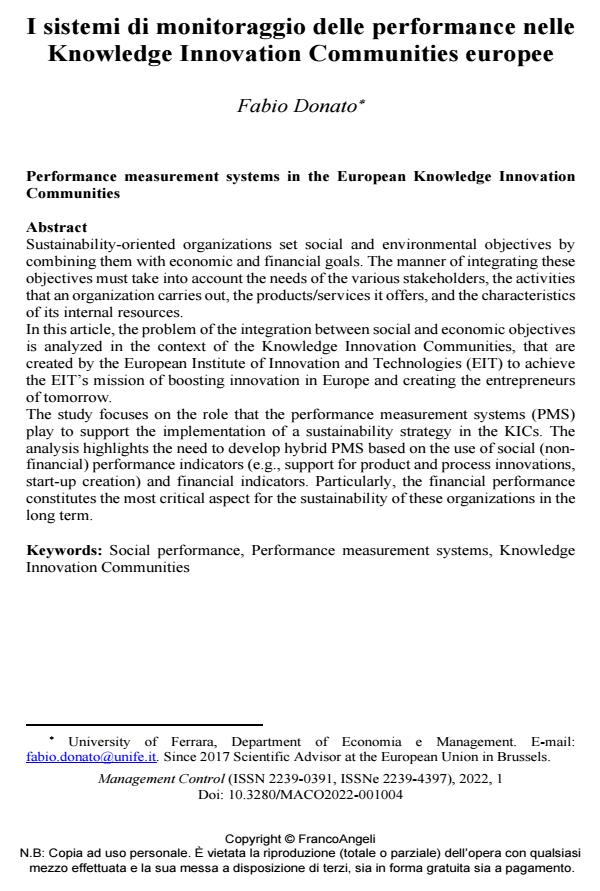Performance measurement systems in the European Knowledge Innovation Communities
Journal title MANAGEMENT CONTROL
Author/s Fabio Donato
Publishing Year 2022 Issue 2022/1
Language Italian Pages 14 P. 45-58 File size 198 KB
DOI 10.3280/MACO2022-001004
DOI is like a bar code for intellectual property: to have more infomation
click here
Below, you can see the article first page
If you want to buy this article in PDF format, you can do it, following the instructions to buy download credits

FrancoAngeli is member of Publishers International Linking Association, Inc (PILA), a not-for-profit association which run the CrossRef service enabling links to and from online scholarly content.
Sustainability-oriented organizations set social and environmental objectives by combining them with economic and financial goals. The manner of integrating these objectives must take into account the needs of the various stakeholders, the activities that an organization carries out, the products/services it offers, and the characteristics of its internal resources. In this article, the problem of the integration between social and economic objectives is analyzed in the context of the Knowledge Innovation Communities, that are created by the European Institute of Innovation and Technologies (EIT) to achieve the EIT’s mission of boosting innovation in Europe and creating the entrepreneurs of tomorrow. The study focuses on the role that the performance measurement systems (PMS) play to support the implementation of a sustainability strategy in the KICs. The analysis highlights the need to develop hybrid PMS based on the use of social (non-financial) performance indicators (e.g., support for product and process innovations, start-up creation) and financial indicators. Particularly, the financial performance constitutes the most critical aspect for the sustainability of these organizations in the long term.
Keywords: Social performance, Performance measurement systems, Knowledge Innovation Communities
Fabio Donato, I sistemi di monitoraggio delle performance nelle Knowledge Innovation Communities europee in "MANAGEMENT CONTROL" 1/2022, pp 45-58, DOI: 10.3280/MACO2022-001004